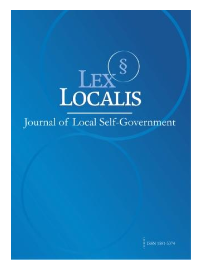THE CONSTITUTION (ONE HUNDRED AND THIRTIETH) AMENDMENT BILL, 2025: A CRITICAL EXAMINATION OF ACCOUNTABILITY OF MINISTERS AND CONSTITUTIONAL SAFEGUARDS IN INDIA
DOI:
https://doi.org/10.52152/gnb7v079Keywords:
Constitutional Amendment, Accountability , Detention, due Process, Separation of Power, Rule of Law.Abstract
The Constitution (One Hundred and Thirtieth) Amendment Bill, 2025, was introduced in the Lok Sabha by Home Minister on August 20, 2025. The bill proposes automatic removal of the Prime Minister, Chief Ministers, and other ministers upon 30 consecutive days of detention. The detention must be on charges punishable by imprisonment of five years or more. The removal has been proposed even without conviction. This paper explores various issues relation to this Constitutional Proposal viz. (a) the legislative trajectory of the Bill (b) the constitutional and statutory framework of bill (c) how the bill deviates from current law and constitutional norms. It critically assesses the Bill’s adherence to fundamental legal principles viz. (a) due process and presumption of innocence (b) the implications of the bill on federalism, separation of powers, and democratic representation (c) the practical obstacles and risks of misuse it entails. The paper also contrasts the Bill with existing provisions, such as the Representation of People Act and judicial precedents like Arnesh Kumar v. State of Bihar. Although the Bill is a way to strengthen accountability, it imperils the rule of law and constitutional safeguards. The conclusion proposes various alternatives to uphold constitutional morality, protecting democratic integrity, institutional balance, and civil liberties.
Downloads
Published
Issue
Section
License
Copyright (c) 2025 Lex localis - Journal of Local Self-Government

This work is licensed under a Creative Commons Attribution-NonCommercial-NoDerivatives 4.0 International License.








